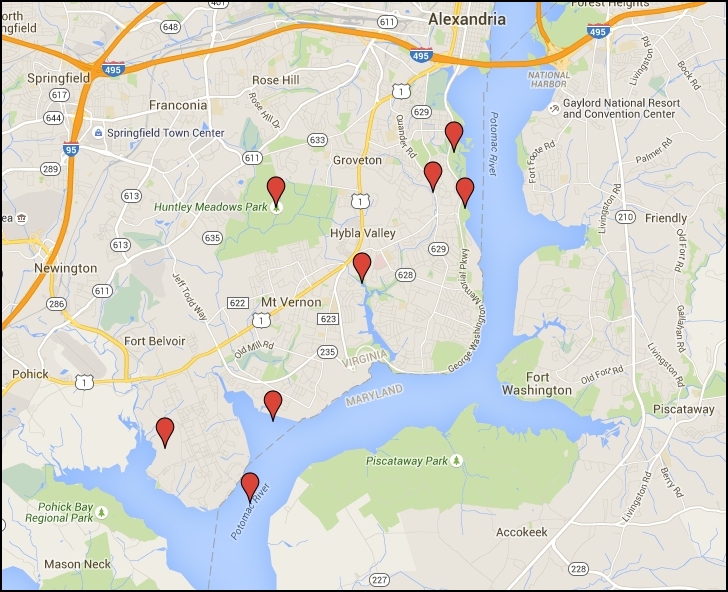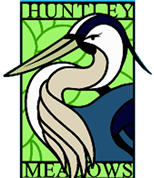Goodbye Kevin
(continued from page 1)
I’m not sure it’s possible to leave the Park in better hands: current staff, volunteers, Friends of Huntley Meadows Park Board members, and of course you! As members of Friends, you are the community that has protected, shepherded and supported the Park now for 30 years, the majority of the Park’s 40 year history. Despite the excitement of moving to California, I am sad and sorry to be leaving such a dynamic, unique and regionally-significant place as Huntley Mead-ows, but not at all worried - as long as the Park has a strong and involved Friends group, its future is secure.
I’d like to briefly share some of the special aspects of this Park that make it so unique, and so worth caring for:
- Size and Wholeness: At 1,554 acres, it is the largest contiguous resource-based Park in Fairfax County.
- Focused and Specific Mission: The Park’s dual mission of Resource Protection and Environmental Education is strong and focused leading to international recognition.
- Diverse and Regionally Significant Habitats: We know about our 50 acre hemi-marsh, but let’s not forget the Park’s other, and equally valuable habitats. Our open meadows, early successional scrub/shrub habitats, stands of mature trees, a shallow braided seep-fed stream system, Dogue Creek, and the largest Coastal Plain Depression Swamp in the State. This habitat is forested, dominated by trees and vernal pools, and covers al-most the entire southern third of the Park. State officials are excited about, and would like to declare that sec-tion of the Park a State Natural Preserve.
- Natural Connective Corridors: The Park is connected to several significant natural resources that add
 tremen-dous sustainability, re-charge potential and natural highways for both seeds and wildlife. We are connected to Jackson Miles Abbott Wildlife Refuge, Potomac River via Dogue Creek, Dyke Marsh and Hog Island on the Potomac River, via Little Hunting Creek, and Paul Spring Branch. From the perspective of water quality and wildlife populations, they are one system.
tremen-dous sustainability, re-charge potential and natural highways for both seeds and wildlife. We are connected to Jackson Miles Abbott Wildlife Refuge, Potomac River via Dogue Creek, Dyke Marsh and Hog Island on the Potomac River, via Little Hunting Creek, and Paul Spring Branch. From the perspective of water quality and wildlife populations, they are one system. - Community! Huntley Meadows Park has some of the most dedicated, passion-ate and knowledgeable patrons in the Washington, D.C area.
Biggest Challenges:
Some of the biggest upcoming challenges for the Park will be dealing with the projected population growth and result-ing transportation infrastructure expansion. Some predications call for Fairfax County to double in population over the next few decades. That could mean one million additional residents. The entire Route 1 corridor, Telegraph Road, and South Kings Highway are all slated for large-scale expansion, along with their accompanying side streets. The high density development of the Tysons Corner area will likely be the template used for most of South County during these expansions and re-zoning. This could bring some exciting and positive public transportation improvements, and excellent new schools, parks, entertainment and shopping opportunities. However, it will also put tremendous pressure on this 1,554 acre wooded parcel that serves as the major transportation blockage in southern Fairfax County. Proposals for new roads, bike commuter routes, parking lots and athletic fields to be added inside Huntley Meadows Park will come over the next few decades, as they already have in the Parks’ not so distant past. It will be up to the Park’s community, neighbors and Fairfax County voters to decide what additions to Huntley Meadows Park are needed. Please stay involved and informed, and do your best to make thoughtful, long-term choices.
Upcoming Projects:
- The VA Department of Conservation and Recreationis currently working with Park staff, the Virginia Native Plant Society and Friends of Huntley Meadows Park to learn more about the Park’s State-rare flora and fauna, and exploring methods for protecting and managing HMP into the future. They are knowledgeable and dedicated professionals, and we’re excited to have them as partners in conservation.
- Historic Huntley’s tenant house will be restored!Completion is scheduled for sometime in 2016, and will allow for more programming and interpretation of this George Mason family site and architectural gem.
- Wetland Restoration Project – it’s all about management and monitoring now.It’s been over a year since construction was completed for this project that involved two decades of planning, 60 public meetings and three separate environmental engineering firms. We’re very happy with how the wetland has responded, especially plant communities, crayfish, fish, frogs and duck species. We’re still aiming for Rails, Bitterns, and Grebes, and slowly working towards the correct water levels for spring and summer to attract them.
- Park Staff and Volunteers are excited about increasing trailside, informal interpretation.The Park offers a great deal of educational programs, approximately 500 a year, including 25 camps with close to 10,000 students and scouts. We’d like to increase the amount of trailside informal interpretation for visitors that happen to be walking down the trail, rather than just offering registration-based programs.
What Role Does Friends of Huntley Meadows Park Play?
This is up to you! The Friends of Huntley Meadows Park Board of Di-rectors currently works closely with you, the members, to support the Park in just about every way possible: funding, advocacy, volunteer work in every capacity, education and outreach, partner and communi-ty building, on-line presence (website and Facebook), and much more. Serving as the voice of the Park and its extended community, acting as long-term stewards of these regionally-significant resources, and providing a stable support system for operations, programs and pro-jects are all ways that YOU have helped the Park grow and flourish over its 40 years. If the Park is lucky, Friends will still be here 40 years from now!
Kindly,
Kevin Munroe


